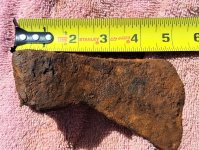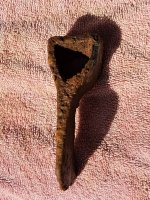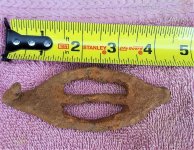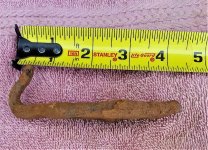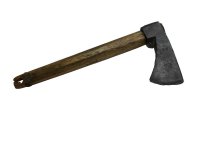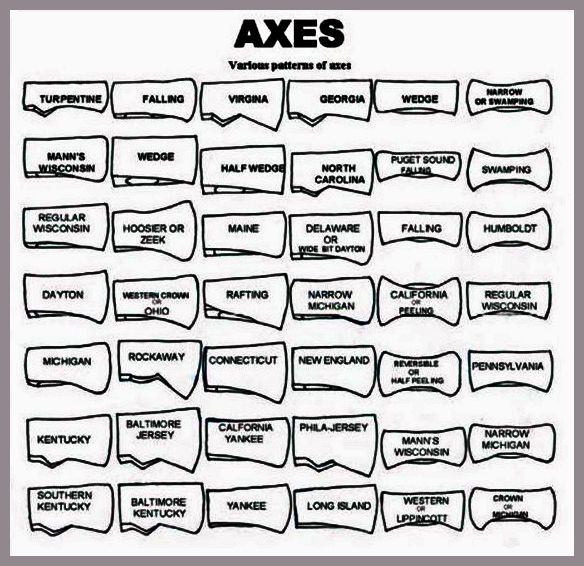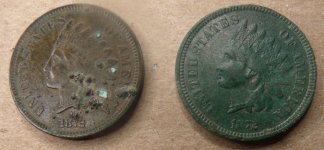- Mar 5, 2010
- 7,511
- 11,906
- Detector(s) used
- XP Deus, White's DFX
- Primary Interest:
- All Treasure Hunting
Been going through my iron bucket and throwing out stuff I know is trash, I came across these two pieces. They were caked in dirt and it wasn't until I washed them off that I thought they might be something. Both came from a Native American site that dates no later than the early 1830s. While there was trade with the "white" man none ever inhabited this site.
I was told that the ax is a trade one and I think the other piece may be the bottom of a stirrup. Am I close?
I was told that the ax is a trade one and I think the other piece may be the bottom of a stirrup. Am I close?



